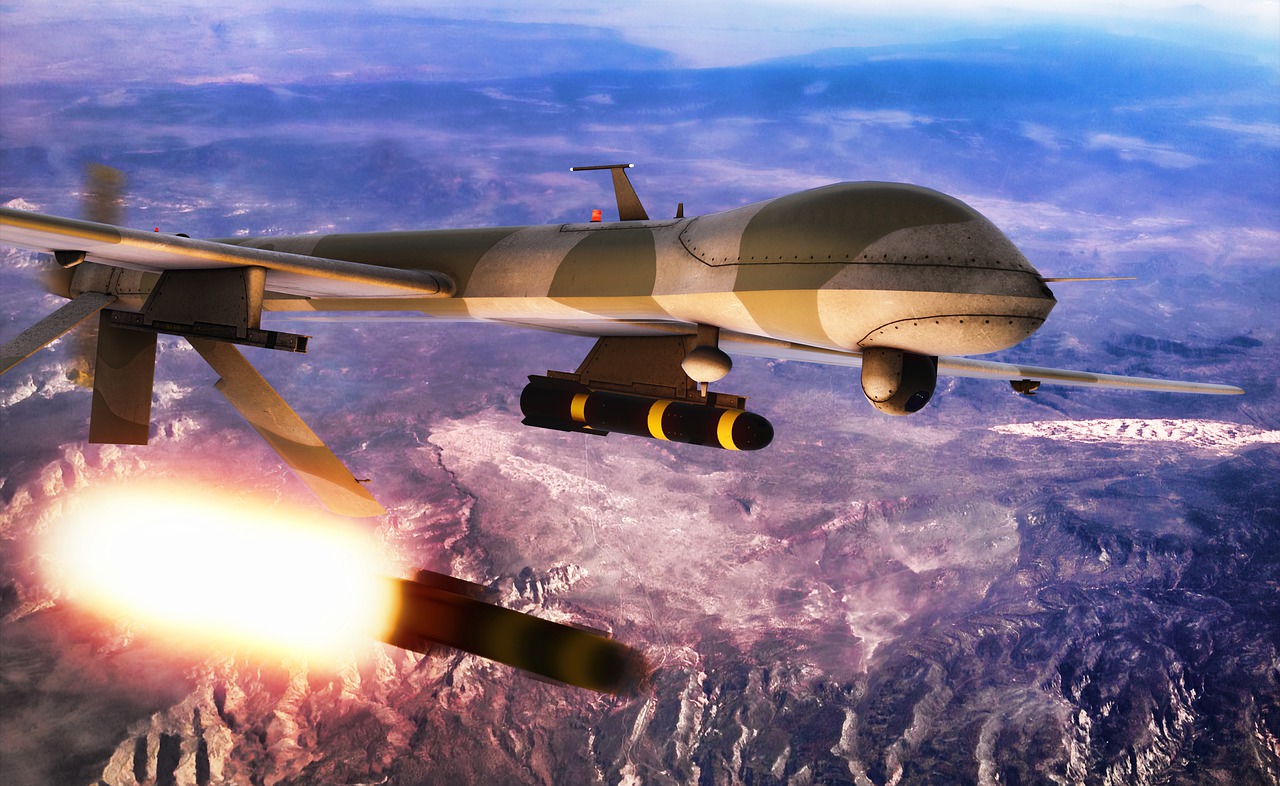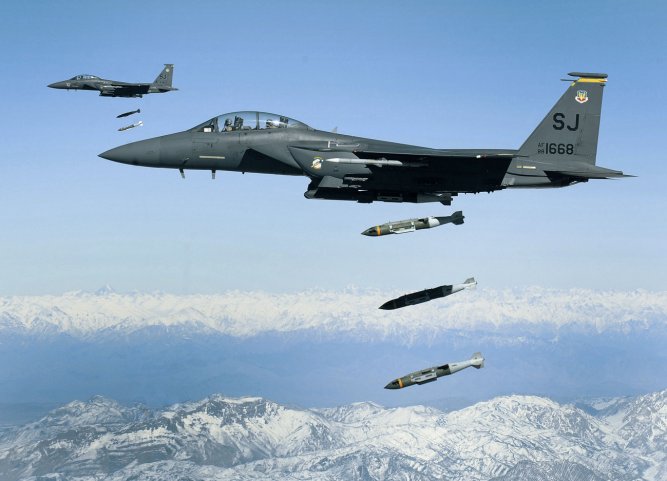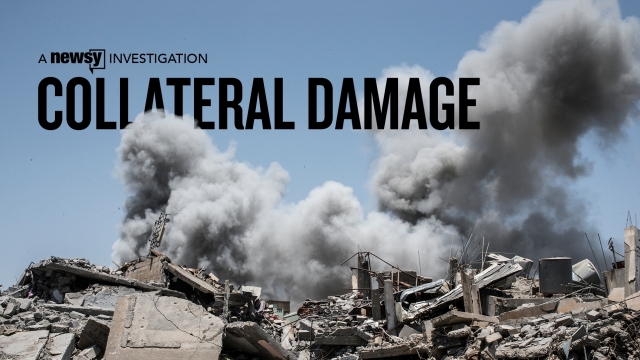
The Eight Trillion Dollar War and the Human Toll
Heidi Peltier / Massachusetts Peace Action & Neta C. Crawford / Cost of War Project
(October 4, 2021) — At the beginning of September, The Cost of War Project at Brown University released its report showing that the costs of the wars in Afghanistan and Iraq and the other post-9/11 wars was a staggering $8 trillion dollars. And these trillions of dollars are only the extra money the US has paid specifically for those wars.
For the most part, they do not include the huge Pentagon base budget that pays for everything except for actually fighting these wars. In addition, the report states that over 900,000 people were killed in our post-9/11 wars.
Heidi Peltier joins us to give a rundown of the various categories of expenses spent conducing these wars over these 20 years and the significance of these enormous numbers. And she will give us the costs specifically attributed to the Afghanistan War and the Iraq War.
You will learn just what these wars really cost us — and these expenses don’t even include most of the interest on the money we borrowed to fight these wars that will have to be paid for years to come.
Heidi Peltier is a Research Professor and contributor to the Cost of War Project at Brown University. She is also director of “20 Years of War,” a Costs of War research series in partnership with the Pardee Center at Boston University.
Dr. Peltier has written extensively on the employment impacts of public spending, including in the areas of green growth as well as demilitarization. Her research focuses on how the public sector can serve the public good, including by putting the economy on a path toward sustainable development — as well as demilitarizing federal spending in order to shift funds to other areas of public interest.
Dr. Peltier has consulted with the United Nations Industrial Development Organization, the International Labour Organization, the US Department of Energy, and various other organizations.
Here’s a link to the slides that were used in last night’s presentation.
Note: While you’re on the Mass Peace Action YouTube page, hit subscribe. More subscribers help us get the word out to more people. Increasing our subscribers has led to hundreds of thousands of people viewing our programs.
Afghanistan’s Rising Civilian Death Toll Due to Airstrikes, 2017-2020

Neta C. Crawford / Cost of War Project @ Brown University
(December 7, 2020) —Summary: When the United States tightens its rules of engagement and restricts air strikes where civilians are at risk, civilian casualties tend to go down; when it loosens those restrictions, civilians are injured and killed in greater numbers. In 2017 the Pentagon relaxed its rules of engagement for airstrikes and escalated the air war in Afghanistan.
The aim was to gain leverage at the bargaining table. From 2017 through 2019, civilian deaths due to US and allied forces’ airstrikes in Afghanistan dramatically increased. In 2019 airstrikes killed 700 civilians — more civilians than in any other year since the beginning of the war in 2001 and 2002.
After the US and Taliban reached a peace agreement in late February 2020, US and other international air strikes declined — and so did the harm to civilians caused by those strikes.
The Afghan government is now negotiating with the Taliban and as part of a broader offensive, perhaps aimed at increasing Afghan government leverage in the talks, air strikes by the Afghan Air Force (AAF) have increased. As a consequence, the AAF is harming more Afghan civilians than at any time in its history.
The uptick in civilians killed by AAF airstrikes between July and September 2020 was particularly striking. In the first six months of this year, the AAF killed 86 Afghan civilians and injured 103 civilians in airstrikes. That rate of harm nearly doubled in the next three months. Between July and the end of September, the Afghan Air Force killed 70 civilians and 90 civilians were injured.
As with the international air strikes, some of this harm could be avoided by tighter rules of engagement, as well as better training. A negotiated ceasefire might also yield results at the bargaining table and at the same time avoid escalating harm to Afghan civilians from airstrikes. [Note: Extensive footnotes are available online.]
Introduction
On the 26th of October 2020, a United States air strike on the Taliban killed three children and a Taliban commander. Four days earlier, an airstrike targeting a religious school is reported to have killed 12 children and wounded 14 civilians. How is it, even as the war in Afghanistan is supposed to be winding down — with negotiations between the Taliban and the Afghan government underway to end it — that large numbers of civilians have been killed in airstrikes in the past several years? Would US withdrawal lead to decreased civilian casualties?
More than a decade ago, the US military recognized that when NATO and US air strikes inadvertently killed civilians in Afghanistan, those strikes diminished US standing with ordinary Afghans, making it harder to win the war. The US military then focused on reducing harm to civilians.

“What is it we don’t understand?
We’re going to lose this fucking war
if we don’t stop killing civilians.”
— General Stanley McChrystal
Thus, in June 2009, General Stanley McChrystal, who was alarmed by the number of civilians being killed by US airstrikes in Afghanistan, ordered that the rules of engagement for using air power be tight, so that the risk to civilians would be minimized. When, on 17 July 2009, two weeks after the publication of McChrystal’s directive, 13 civilians were wounded and at least five were killed in a US close air support strike in Kandahar, Afghanistan, General McChrystal was livid. He said, “What is it we don’t understand? We’re going to lose this fucking war if we don’t stop killing civilians.”
Since 2008 and 2009, the US military guidance on airstrikes in Afghanistan has fluctuated between more and less restrictive parameters — with demonstrable consequences for civilians. When international and government forces fear they are losing or believe that they need to increase the pressure on militants, they loosen the rules for airstrikes and civilian casualties tend to increase.
When the military feels pressure from Afghans, NGOs and the news media to reduce civilian casualties, and are themselves convinced that civilian casualties are counterproductive to the mission, they tend to tighten the rules of engagement. The restraints on airstrikes are intended to save civilian lives, and the restraints generally do: the evidence shows that civilian casualties due to airstrikes decrease.
From 2017 through 2019, with the war in a long stalemate, the US relaxed its rules of engagement for airstrikes. As a consequence, civilian casualties due to airstrikes increased from 2017 through 2019. In 2019, more Afghan civilians were killed in airstrikes than at any time since early 2002.
The United States negotiations with the Taliban began in December 2018. In the period before and during those negotiations, the war in Afghanistan escalated as each side attempted to gain territory and leverage. Data from the United Nations Assistance Mission in Afghanistan (UNAMA) shows civilians paid the price — with the number of civilians killed annually peaking in 2018 at more than 3,800 deaths. The two sides came to a peace agreement — which did not include the Afghan government — in February 2020. US and other international forces airstrikes have decreased since then, but Afghan Air Force strikes have increased.
The Afghan government began direct negotiations with the Taliban on 12 September 2020, 19 years after the 9/11 attacks and the start of the US war in Afghanistan. However, unless there is a ceasefire, both sides will continue trying to gain a tactical advantage while negotiations are underway. The toll on civilian lives is likely to increase.
Escalating US Air War and Civilian Deaths, 2017- February 2020
All sides — the Afghan government, the US and its allies, along with the anti- government militant groups — have escalated their attacks during various periods of negotiations. This has led to a predictable and alarming increase in civilian deaths. Anti- government elements, including the Taliban and ISIS, killed an average of 1,964 civilians per year between 2007 and 2016. Between 2017 and 2019, these forces killed an average of 2,071 people each year, a slight but significant 5% increase.
The US, its allies, and the Afghan Government, which the United Nations calls Pro- Government Forces (PGF), also escalated their operations in the period immediately before and during the negotiations in hopes of retaking disputed territory and gaining leverage. As a consequence, the number of civilians killed and injured by pro-government forces also grew in the years prior to the US peace agreement in early 2020. From 2007 to 2016, PGF killed an average of 582 civilians each year; from 2017 through 2019, Pro-Government Forces killed an average of 1,134 civilians each year, a nearly 95% increase.
The escalation in fighting and its consequences for civilian deaths can be seen quite clearly in one PGF tactic: the air war against anti-government militant forces, including the Taliban and ISIS. Only the US, other international forces, and since 2015, the Afghan government air forces, are able to carry out air strikes, since neither the Taliban nor ISIS have airpower.
Starting in 2017, the US and its allies dramatically increased the number of weapons released from the air. The Pentagon signaled an escalation in the war in 2017 when it dropped its largest yield bomb, the Massive Ordnance Air Blast (MOAB) — nicknamed the “Mother of All Bombs” — in April 2017 against ISIS forces located in eastern Afghanistan. This was the first combat deployment of that weapon in any war zone. After the strike, President Trump said, “We have the greatest military in the world, and they’ve done a job as usual. So we have given them total authorization, and that’s what they’re doing. And frankly, that’s why they’ve been so successful lately.”
The number of airstrikes and the total number of weapons released from the air increased significantly in the period leading up to the February 2020 peace agreement between the US and the Taliban. The escalating number of air strikes corresponded with a decline in the total number of US troops stationed in Afghanistan. At the peak in 2011, US forces in Afghanistan numbered about 100,000 and there were more than 15,000 contractors also working for US companies in the warzones. In February 2020, there were about 12,000 US military personnel in Afghanistan.
The US was in part increasingly using airstrikes because it had fewer troops on the ground, but also because it has, for decades — including during the Vietnam War — believed that air power works to coerce its enemies and bring them to the negotiating table. As US Brigadier General Lance R. Bunch said in June 2018,
Indeed, there were more weapons dropped from the air in 2018 and 2019 than at the height of US presence in Afghanistan in 2011.
The US Central Command stopped publishing its monthly summaries of air strikes in Afghanistan in March 2020, so there are no figures for air strikes available after February 2020. Air Force Magazine reported the figures were no longer being published, according to the Air Force, because of a multiplicity of diplomatic relational concerns, including how the report could adversely impact ongoing discussions with the Taliban regarding Afghanistan peace talks.”
Figure 1. US Central Command Air Strikes and Weapons
Releases in Afghanistan, 2011-February 2020

Why Changes in the Rules of Engagement Matter
During the US war in Afghanistan, the number of civilians killed by international forces’ air strikes has varied depending on the tactics and the priority the US has placed on preventing civilian casualties. In 2008, international forces’ airstrikes killed 552 civilians. After that, the US and its allies committed to reducing the number of civilians killed by airstrikes.
The coalition achieved a measure of success at reducing harm to civilians by implementing a series of tactical directives, including restricting US air strikes to instances where the US or other coalition military forces were in contact with anti-government forces. These restrictions caused the number of air strikes and weapons releases to decline through 2015; civilian deaths due to airstrikes also declined.
In 2017, then US Secretary of Defense Jim Mattis announced that the US had relaxed its rules of engagement for airstrikes in Afghanistan. Specifically, the rules were modified so that the US did not have to be in direct contact with enemy forces to be able to make air strikes, so that narcotics factories could be targeted and so that Afghan military could call in airstrikes. As Mattis told the Senate Armed Services Committee, while the US was
committed to preventing harm to civilians, the “restrictions that did not allow us to employ the air power fully have been removed.”
The consequences of the relaxed of engagement were immediate. The total number of civilians killed by international and Afghan Air Force air strikes increased. International military forces, led by the US, are responsible for the majority of those killed by airstrikes from 2015 through 2019: 1,357 killed by international forces, compared to 461 killed by the AAF. The number of civilians killed by international airstrikes increased about 330 percent from 2016, the last full year of the Obama Administration, to 2019, the most recent year for which there is complete data from the United Nations.
Some of the increase in civilian deaths in recent years has been due to the greater role played by the Afghan Air Forces, which began to make airstrikes in 2015. In some cases, UNAMA was unable to determine whether it was the international forces or the Afghan Air Force that caused the deaths. However, even if we attribute all 160 undetermined deaths from airstrikes to the Afghan Air Force, international air strikes still account for a majority of the killing after the Afghan Air Forces began to make airstrikes in 2015 through 2019.
Figure 2. UNAMA Report of Number of Civilians Killed in Afghanistan
Government Air Strikes, 2006- September 2020
There have also been nearly as many injuries to civilians from international and Afghan Air Force air strikes as fatalities. From 2009 through September 2020, the UNAMA counted 2,588 civilians who were injured in pro-government force airstrikes. According to UNAMA data, more than 3,340 civilians were killed in by air strikes in Afghanistan between 2009 and the first nine months of 2020.
Figure 3. UNAMA Report Number of Civilians Injured in Afghanistan
by Aerial Operations, 2009-September 2019

It is also important to note that the US does not agree with the UN attribution of civilian casualties. For instance, while the UNAMA attributes more 546 deaths and 209 injuries to international forces air strikes in 2019, the US counts 97 deaths and 59 injuries due to US forces air strikes.
The US does acknowledge harming Afghan civilians as part of its military strategy. In 2019, the United States made 65 “condolence payments” to Afghan civilians totaling more than $314,000. The payments are to be considered “part of an expression of condolences, sympathy or goodwill, . . . rather than as a means of compensation or reparation.” The number and sum of US payments to Afghans in 2019 were an increase over 2017 and 2018 condolence payments to Afghans.

Table 1. US Military “Condolence Payments” in Afghanistan
for Deaths and Injuries, 2015-2019
While US commanders are required to keep records about the basis of the decision to offer condolence payments, details about the incidents which led to the US condolence payments are not publicly available. However, since the US ground force activity was greatly diminished by 2019, it is likely that the majority of those payments were for deaths or injuries that the US believed resulted from its airstrikes.
A New Phase in 2020:
Escalating Afghan Air Force Strikes and Civilian Casualties

Following the US-Taliban peace agreement, international forces decreased their direct combat activity in Afghanistan. This included fewer international forces airstrikes in the first 9 months of 2020, which in turn corresponds with a decline in the total number of injuries — a reduction compared to the same period in 2019, “mainly due to fewer civilian casualties caused by airstrikes conducted by international military forces.”
Although the war is still, essentially in a stalemate, Afghan military activity increased as the US passed much of the fighting to the Afghan National Defense Forces and Police in 2020. This transfer of responsibility to Afghan forces includes shifting the burden of air strikes to Afghan Air Forces. In September 2020, after the negotiations between the Taliban and the Afghan government opened, fighting between the two sides intensified and there was a spike in both the number of Afghan Air Force airstrikes and the number of civilians killed and injured in those strikes.
As UNAMA noted, for example, “On 19 September, in Khanabad district, Kunduz province, the Afghan Air Force conducted an airstrike against the Taliban. Residents who gathered in front of a house that caught fire from the airstrike were harmed when a second airstrike impacted the same location, resulting in the killing of 15 civilians and the injuring of five others.” Further, in October, fighting in Helmand Province between the Afghan government and the Taliban over control of the city of Lashkargah also included airstrikes. Civilians have been hurt by violence from all sides. In fact, according to The New York Times, 212 civilians were killed in October 2020, making it the worst month for civilian casualties since September 2019.
Figures 2 and 3 thus illustrate two dramatic stories for the first 9 months of 2020: even as the US and its allies decrease the number of civilians they have harmed in international airstrikes, the Afghan Air Force has increasingly hurt its civilian population. In sum, UNAMA found in mid-2020 that “Civilian casualties resulting from airstrikes by the Afghan Air Force during the first six months of 2020 have tripled as compared to the same time period in 2019.” But the uptick in civilians killed by AAF airstrikes between July and September 2020 was particularly striking: 86 Afghans were killed in the first six months of the year; 70 civilians were killed and 90 civilians injured in the next three months, between July and the end of September.
By the end of September, UNAMA found that the Afghan Air Forces had already killed 156 and injured 193 civilians, exceeding its total harm to civilians compared to 2019, when it killed 113 and injured 133 civilians over the entire course of 2019. UNAMA has, for months, faulted the AAF for targeting civilian homes.
While the US may have passed an increased share of the role of conducting airstrikes to the AAF, the US is to some extent responsible for the performance of the Afghan Air Force. The US military has supplied and trained the AFF in combat and other tactics since 2005, at a cost of more than $8 billion dollars between FY2010 and FY2020. This includes the US transfer of 18 A-29 close air attack aircraft to the Afghan Air Force since 2016.

The UN voiced “grave concern” after US airstrikes killed at least 18 civilians.
Training is also essential for reducing the risk of civilian casualties caused by airstrikes. About fifteen years into the US war in Afghanistan, the US began providing training to Afghan military forces in civilian casualty prevention, which included training Afghan pilots in “proper employment of weapons systems and their effects, including ways to minimize collateral damage.” And, the DOD says, its “advisors continue to work closely with the Afghan government, including at the highest levels, to reduce civilian casualties by, for example, raising awareness about the importance of trying to avoid causing civilian casualties, providing precision-guided munition to the AAF, and training pilots how to employ them.”
While much of the US training of the Afghan Air Force occurs in Afghanistan, the US began to train members of the Afghan Air Force at US bases in 2009. The US plans to stop all US-based training of Afghan pilots by 31 December 2020 even as it has planned to supply six more A-29s in February 2021 to the Afghan Air Force.
With the Taliban arguably as strong as it has ever been since 2001, the Afghan government is on the defensive and seeking to increase military pressure on the Taliban during negotiations.33 In this context, whether or not the US remains in Afghanistan, Afghan Air Force airstrikes will likely have increasingly devastating consequences for civilians, possibly diminishing civilian trust in the Afghan government, unless the AAF adopts rules of engagement that minimize civilian casualties or unless the Afghan government and the Taliban can agree to a mutual ceasefire — which would save lives regardless of the tactic — while they negotiate.
Neta C. Crawford is Professor and Chair of the Department of Political Science at Boston University and Co- Director of the Costs of War Project, Boston University and Brown University.
Footnotes available with source document at this link.
Note from the host organization, Massachusetts Peace Action:
• Check out our Raytheon Antiwar Campaign
• Join as a dues paying, voting, member. We would love to have you.